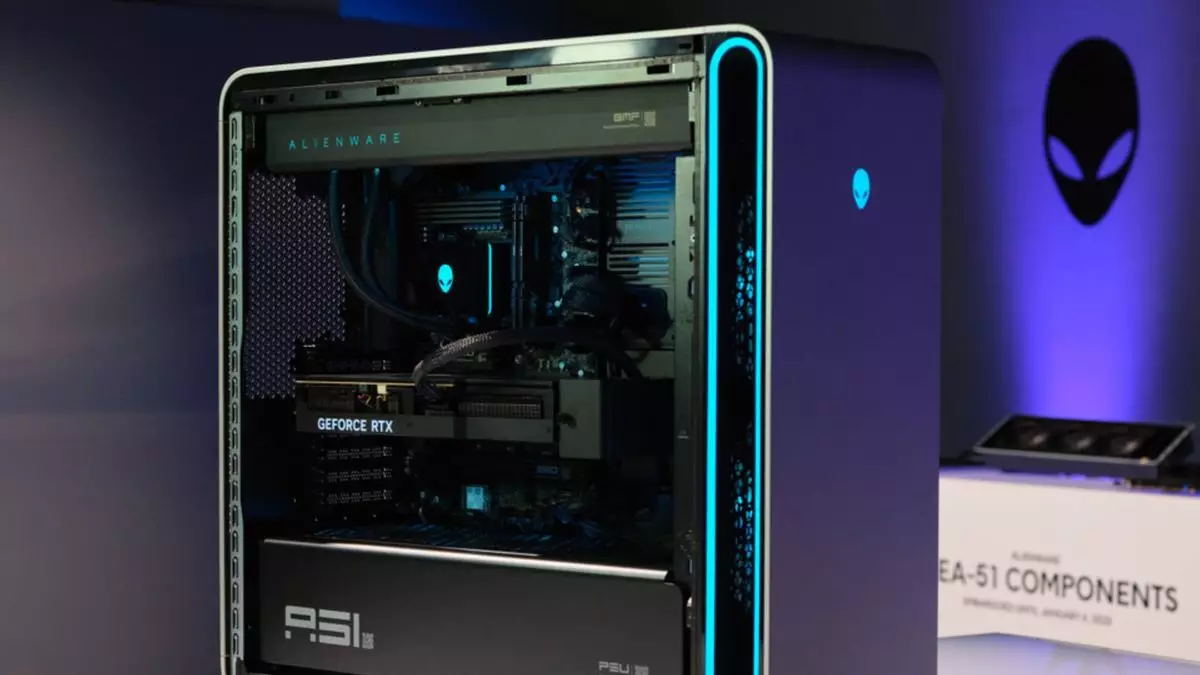In an era where gamers demand more flexibility, Alienware’s new Area-51 desktop rig arrived at CES with the promise of being a fully upgradeable machine. As the gaming landscape evolves, so too do the expectations surrounding rig customization. Alienware, a brand that has long been criticized for creating powerful yet rigid systems, aimed to turn this narrative around. The introduction of a fully upgradeable model hinted at a progressive shift, suggesting that even the most non-conforming manufacturers could listen to consumer feedback. However, enthusiasts quickly learned that beneath the surface of this promising announcement lay certain caveats that challenged the original sentiment.
The Asterisk of Additional Costs
Initially, the Area-51’s supposedly unrestricted modularity sounded like a dream come true, but the devil is in the details—specifically, a $35 conversion kit required to enable connectivity with third-party motherboards. This unexpected expense raises questions about Alienware’s commitment to true upgradeability. When spending a premium price for a gaming rig, the last thing consumers should anticipate is an additional fee to access basic functionalities. A power switch wiring cable, a fan power bridge wiring cable, and a USB dongle extension being compartmentalized into an extra-pay bundle can leave early adopters feeling cheated. With such a stellar reputation for premium products, this approach feels contrary to the ethos of valuing the customer experience.
Navigating Compatibility and Limitations
The intricacies of motherboard compatibility further complicate the promises of the Area-51’s modularity. While Alienware claims broad compatibility with ATX12VO motherboards, the need to purchase a new power supply adds another layer of complexity and cost. For gamers who revel in the significance of DIY builds, this can feel like a bitter pill to swallow. Moreover, existing users of older Area-51 models are out of luck; the new conversion kit isn’t backward compatible. Given that the last generational upgrade was the R4 model in 2017, it’s disheartening for long-time supporters who’ve invested in Alienware’s ecosystem to realize they are excluded from the latest advancements.
Performance Upgrades Amidst Design Limitations
Despite the limitations surrounding motherboard upgrades, the Area-51 remains a formidable contender in the gaming rig space. With enhanced thermals and performance specs, Alienware touts that its latest iteration runs cooler and quieter than ever before. Equipped with NVIDIA’s gaming powerhouse in the form of the RTX 50 series cards, gamers can expect a high-performance experience tailored for modern titles. The introduction of positive pressure airflow is an engineering triumph, reducing dust intake while efficiently expelling heat. However, it’s perplexing how a rig designed for performance still imposes so many operational restrictions on customization, especially when one considers the DIY ethos that many builders cherish.
The Aesthetic Appeal vs. Internal Challenges
Alienware has cemented itself as a purveyor of visually striking rigs, and the Area-51’s design continues this tradition. The aesthetics may woo prospective customers, but appearances can be deceiving. A case that looks sleek on the outside can still harbor inefficiencies on the inside, and many will find that the constraints on motherboard upgrades diminish the allure of an otherwise captivating machine. Gamers want to build their ultimate dream system, but if the capabilities require coaxing out with extra payments, it transforms the so-called “upgradeable” identity into a half-hearted marketing tagline.
A Step Forward, Yet a Step Back?
The introduction of modularity marks a specific progression in Alienware’s approach, yet evidence suggests that this has not been fully realized. True flexibility involves unrestricted adaptability and ease of upgrades. While Alienware certainly takes steps to provide additional options, it’s undeniable that the added costs and limitations attached to motherboard alterations cast shadows over their marketing claims. At a time when consumer choices are rife, Alienware’s approach serves as a reminder that companies must tread carefully; the balance between innovation and affordability remains precariously intertwined.
Alienware’s latest offering has shown both promise and pitfalls. It may not entirely represent the shift towards total modularity that many gamers hoped for, but it does highlight the intricate challenges facing corporations striving to maintain their legendary status while also evolving with consumer needs.

